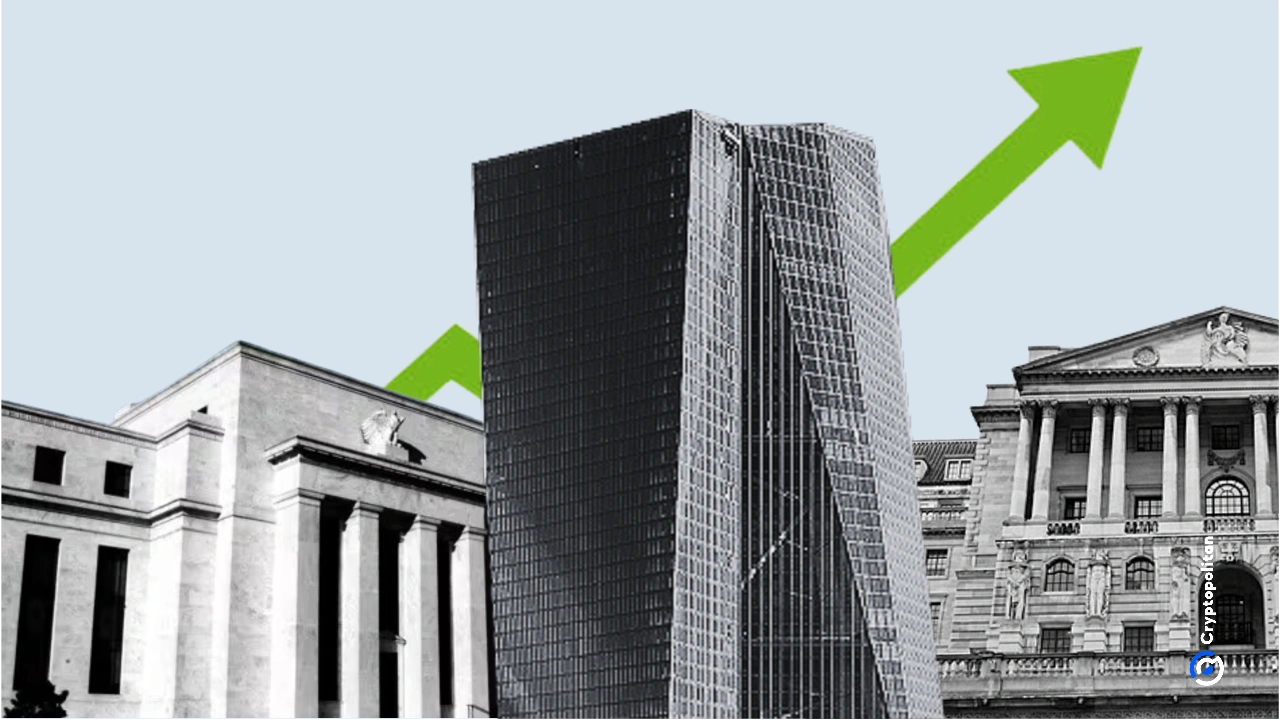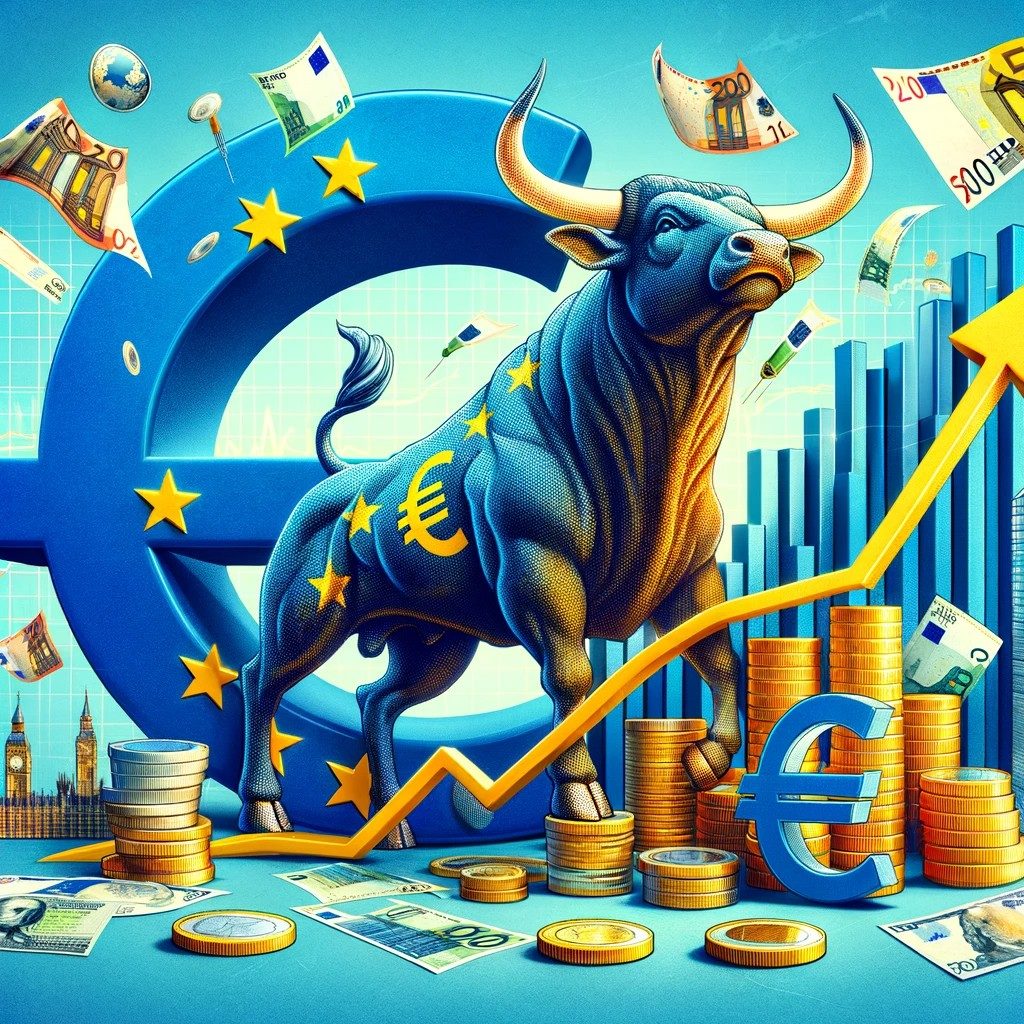Central banks across the globe are on high alert, tweaking interest rates to help the global economy dodge some heavy punches.
In October, central banks in Canada, New Zealand, and the European Central Bank each decided to slash rates. Canada and New Zealand cut by 50 basis points each, while the European Central Bank went for a 25-basis-point trim.
Japan held firm, keeping its rates unchanged, and the U.S. Fed, along with banks in Australia, Switzerland, Norway, and the UK, didn’t even hold a rate-setting meeting this month. Now everyone’s wondering how long this cutting cycle will last and how deep the cuts will go.
Emerging markets dive into rate cuts
The U.S. election is only adding to the suspense. With the Fed widely expected to drop rates by another 25 basis points on Thursday, the election’s outcome could change things fast. Kamala Harris’s win might mean a continuation of current policies, keeping growth and inflation steady in America.
But if Donald Trump secures victory, his tariff-heavy approach could fuel inflation and potentially limit the Fed’s ability to ease rates further. Emerging markets didn’t waste time either. Out of 18 central banks across developing economies that held meetings in October, 13 discussed their rate-setting agendas.
Six banks, including those in China, South Korea, Thailand, the Philippines, and Chile, cut their rates by 25 basis points each, while Colombia went for a 50-basis-point cut.
Russia, standing out in a crowd of cutters, actually hiked rates by 200 basis points, citing different domestic pressures, while the remaining six banks decided to hold rates steady.
These moves have given a nice boost to emerging market bonds. However, as Jean Boivin, head of BlackRock Investment Institute, thinks, “We think those rate cuts may soon be paused.”
Let’s break it down: since January, rate cuts across emerging markets have hit a whopping total of 1,710 basis points over 42 adjustments, leaving last year’s 945 basis points easing in the dust. On the other side, emerging markets have also seen total rate hikes reach around 1,300 basis points this year as they try to keep inflation under control.
IMF’s inflation report brings a mixed bag
The International Monetary Fund (IMF) came out with a fresh report on inflation this month, and it’s clear there’s both good and bad news. First, the good: it looks like the fight against inflation is working—mostly. Inflation rates that hit a crazy 9.4% year-on-year in Q3 2022 are expected to drop to 3.5% by the end of 2025, which is in line with pre-pandemic averages.
If this holds, it’s great news for central banks; it means they can ease up on monetary policy. But even with inflation coming under control, global economic risks are nowhere close to fading. Tensions in the Middle East, commodity market instability, and conflicts in low-income and developing countries are already dampening growth prospects.
But here’s a twist: despite all these shocks, the global economy has been surprisingly resilient. The IMF’s projected growth for 2024 and 2025 holds steady at around 3.2%, while the U.S. economy is expected to grow by 2.8% this year, then slow to its potential rate by 2025.
Advanced economies in Europe could see a minor growth bump next year, though this is hardly a huge recovery. Emerging and developing economies remain stable, with projected growth at around 4.2% for 2024 and 2025, bolstered by resilient performance in emerging Asia.
So, what’s behind this inflation rollercoaster? The IMF says a mix of post-pandemic shocks, global demand surges, and commodity price spikes from the Ukraine war all came together to shoot prices up. Now, as these disruptions ease and demand cools, inflation is coming back down.
Labor market recovery has played a role too, with increasing immigration helping to improve labor supply, keeping inflation in check without forcing a big hit to economic activity.
But as the saying goes, don’t get too comfortable. Risks are still hanging around. The IMF highlights potential trouble from more regional conflicts, misguided trade policies, and tight global financial conditions. They warn that if central banks keep rates too high for too long, economic growth could stall, and financial systems already under strain could face even more challenges.
Policy pivots
The IMF’s report points to a “triple pivot” that could help stabilize the global economy. The first pivot—monetary easing—is already rolling out. Since June, major central banks have begun trimming policy rates, aiming for a neutral stance.
With cooling labor markets, these rate cuts are providing some relief without triggering a sharp rise in unemployment, though signs of rising jobless rates indicate that more adjustments might be needed to avoid an economic slowdown.
Lower interest rates in advanced economies are good news for emerging markets, as their currencies tend to strengthen against the dollar, reducing imported inflation. This setup could make it easier for these economies to tackle their own inflation battles.
Yet inflation in services remains stubbornly high in some emerging markets, prompting a few to hike rates once again to keep inflationary pressures in check.
Adding to the complexity, global supply chains remain a mess. Climate change, health crises, and geopolitical tensions are driving prices up and cutting down output, making it harder for central banks to control inflation. Even if inflation expectations are steady now, the future looks murky. The IMF warns that workers and businesses might start pushing back harder to protect wages and profits if inflation spikes again.
The second pivot—fiscal discipline—is all about stabilizing debt and building fiscal buffers. After years of loose spending policies, the IMF says it’s time to get serious about debt control. While lower rates do reduce funding costs, that alone won’t fix the problem.
Many countries need to improve their primary balances or the gap between revenue and spending without debt service. In the U.S. and China, current fiscal plans aren’t expected to stabilize debt, which is a red flag.
But it’s not just the big players. Many countries that appeared on track to control debt after the pandemic and cost-of-living crisis are showing signs of slippage.
The IMF warns that delaying fiscal consolidation could lead to chaotic adjustments down the line while tightening budgets too quickly could actually harm economic activity.
The road is narrow here: credible, disciplined fiscal adjustments over multiple years are crucial. The more reliable these adjustments, the more central banks can ease rates without stoking inflation. However, the political will to make these changes has been lacking in many places, creating more room for economic turbulence.
The third pivot, and the toughest one, is growth reform. Economic growth is in desperate need of a boost if countries want to build fiscal buffers, tackle demographic challenges, and improve climate resilience.
According to the IMF, projected global growth over the next five years is around 3.1%, the lowest in decades, driven partly by China’s weaker outlook. This gloomy forecast extends to Latin America and the European Union, where growth potential is waning.
Countries are responding with a mix of industrial and trade policies, hoping to protect local industries and workers. But these moves often trigger retaliation and rarely bring long-term economic gains. For real change, the IMF says nations need reforms that encourage innovation, boost productivity, and drive private investment. Trade protectionism won’t cut it.
But the reform isn’t exactly popular. Many of these adjustments face huge social resistance, especially in countries where the economy is already struggling. The IMF hints that governments will need both courage and strong public support to push these policies forward.
Central banks and policymakers are facing one of the toughest periods in recent memory. As they navigate rate cuts, inflation concerns, and sluggish growth, the stakes couldn’t be higher. What happens next will test the resolve of central banks, governments, and financial institutions alike.





